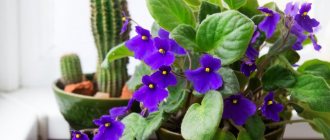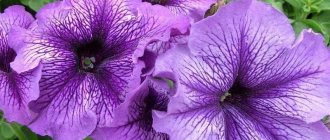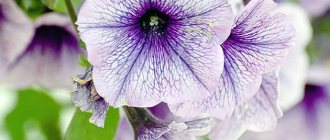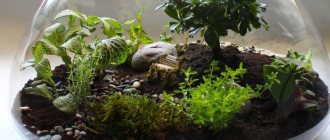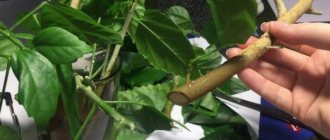The flower culture with such a beautiful name Lobelia is an annual ornamental herbaceous plant, valuable for its lush and beautiful flowering. Gardeners grow it in open ground, in composition flower beds, and in a hanging form, which allows the formation of decorative hanging compositions. Today our topic is planting, flower care and the main types of Lobelia.
The flower “cap” of lobelia consists of numerous flowers, the color palette of which captivates with white, blue, lilac, pink, and red colors of small openwork flowers against the backdrop of openwork greenery.
As a hanging crop, lobelia is widely in demand by flower growers, thanks to the ease of its cultivation and long, openwork, brightly flowering shoots, which give hanging compositions featuring it a special lightness and elegance.
Perhaps someone will find it troublesome to propagate lobelia through seedlings, which are almost impossible to do without, because this flower crop, as noted above, is an annual plant.
How to plant and grow lobelia?
Considering one of the important qualities of this plant is to be used for growing in hanging pots, these flowers can be grown for decorative purposes not only in open ground, but also on open balconies and loggias with alternating natural light and in a fairly windward direction.
Thanks to its bright and lush flowering, lobelia will be a wonderful addition to your flower garden or flower bed.
General information
The lobelia flower belongs to the bellflower family and is part of an extensive - up to 400 species - genus, including annual, perennial herbs, subshrubs, shrubs and even trees. It received its name in honor of the Dutch botanist who headed the botanical garden under King James I.
Lobelia is distributed almost everywhere in subtropical and temperate climate zones. Several wild species are also found in Russia.
Cultivated species are grown not only for decorative purposes, but also for medicinal purposes. The medicinal properties of the plant are given by the alkaloid lobeline, derivatives of which are used in pharmacological practice to stimulate the respiratory centers and are used to treat asthma and other respiratory diseases.
Lobelia is distinguished by a neat and, in most varieties, compact bush. “Fluffiness” is given to it by graceful, fragile shoots branching from the base. The flowers are small, up to 2 cm in diameter, forming inflorescences sitting on high pedicels. The corollas are zygomorphic, resembling bells, but with petals shifted upward. Common natural colors: blue, white, indigo and violet. Flowering lasts from early summer to late autumn. After pollination, ovaries-boxes with seeds as small as dust are formed.
What planting soil is suitable for lobelia?
Lobelia is not a picky plant: most of all, it requires loose, light soil with the inclusion of peat. In open ground, for its successful growth and flowering, an equal amount is necessary, in addition to the main soil of the flower bed, humus and river sand. Slightly acidic or neutral soil characteristics are preferable for it.
For your information! You should not apply excess fertilizer to lobelia because this will make flowering less abundant.
For the ampelous form of growing lobelia, it is better to purchase soil at a specialized garden store, and this purchase will not be expensive.
Choosing a location on the site
Annual varieties prefer light areas and well-drained, moderately moist soils without stagnant water. In the shade they bloom poorly and form sparse bushes, and on damp, too dense soils they suffer from fungal diseases.
Compact forms are excellent as border plants and look great in rocky gardens, edgings and mixed borders. Climbing plants are one of the best ornamental plants for growing in pots, containers, and on balconies. As ground cover forms , they wonderfully decorate the trunk circles of low-growing mountain ash or birch trees.
Perennial species can develop in sparse partial shade, they are less demanding of soil moisture, and purple lobelia develops well even in wetlands.
Our article “Lobelia - types and varieties” will help you understand the variety of types and varieties of lobelia.
How to plant - sow lobelia?
Lobelia seedlings are sown with seeds in a low container 3-5 centimeters deep. You can buy a flower container or use improvised means. If possible, you can sow it in open ground and pots.
The timing of sowing this flower crop for seedlings, taking into account its vegetative regime, is at the beginning of February. It can be sown in open ground from the second half of April to the end of May. For its seeds to germinate, two weeks are enough with appropriate care of the crops, which require gentle irrigation through a spray bottle.
Lobelia seeds are very small and should be sown with the expectation of preventing future seedlings from thickening in the following ways:
- Add a little fine dry sand to the bag of seeds and use a toothpick to mix it evenly with the seeds, so that with circular movements of your fingers, folded in a pinch, scatter this mixture over the surface of the planting soil.
- Moisten a wooden stick, preferably an ice cream stick, with water, shake off any drops and immerse it in the seeds, which will stick to the stick. Using a toothpick, gently shake them off, distributing them evenly over the seating surface.
- Cover the planting soil with a layer of snow, and scatter lobelia seeds on top of it in any way so that it will gradually melt and more or less evenly distribute the sowing.
Granulated seeds make it easier to sow lobelia, as they are easier to distribute evenly over the soil.
Lobelia seeds sown on moist soil are not sprinkled with soil on top - they need maximum light to germinate.
Outdoor care
Lobelia and marigolds in the design of the path
The stages of caring for lobelias are traditional and include regular watering, fertilizing, pruning, and pest and disease control.
Watering
Lobelia is demanding on soil moisture and if there is a lack of moisture, it can stop developing and stop flowering. It must be taken into account that annual species have a shallow root system, and many perennials grow in natural conditions in floodplains, in flooded areas and on dry soil they can die.
During dry periods without natural precipitation, plantings are watered every week at the rate of 10–15 liters of water per 1 square meter. m, distributing water evenly, it is advisable to use sprinkling or drip irrigation.
Feeding
When growing all species, you need to carefully use nitrogenous fertilizers - overfeeding will invariably lead to the development of luxurious green mass - stems and leaves to the detriment of flowering.
The first fertilizing is carried out 14 days after planting the seedlings; for this purpose, complex soluble fertilizers with equal contents of nitrogen, phosphorus and potassium are used, for example, liquid “Kristalon for garden flowers” of the Fertika brand.
The following fertilizing is applied every 10–14 days , choosing brands with a high content of phosphorus, potassium and low nitrogen, which will have a good effect on the development of the root system and will give bright, lush flowering. For perennial species , feeding is stopped in September to allow them to go into a dormant state.
Trimming
A special shaping technique is applicable for annual species of columnar and compact shape ; such summer pruning will improve tillering. To do this, the shoots are cut or pinched twice – 10 days after planting and another 2 weeks later.
Some compact varieties (Crystal Pallas, White Lady) do not require additional pruning; a neat habit is genetically determined and with a sunny location, fertilizing and watering, the plants form ideal spherical bushes.
More vigorous species, for example, L. Richard and L. strong grow up to 40 cm in height, forming spreading bushes. To give them a slender columnar shape, pinch the central stem when it reaches the desired height, and then the side shoots. For creeping varieties, it is advisable to remove weak shoots; do not shorten them in length.
To stimulate re-blooming in late summer and early autumn, faded stems of annual species are pruned, the bushes are watered and fed. In good conditions, flowering shoots quickly grow and the plants bloom again, continuing to please the eye until late autumn.
Disease and pest control
Thrips parasitize the plant
Lobelia is rarely attacked by pests, being a poisonous plant, but aphids and thrips can cause significant damage. In addition, flowers are affected by fungal diseases - all kinds of rot and rust.
Aphids are especially harmful in hot spring weather - these pale yellow small insects tightly cling to young shoots, suck out the juice, weakening the plants, and in addition, act as carriers of viruses.
The smallest thrips are difficult to see. You can make sure that the plantings are being attacked by these pests by external signs. Pale green spots appear on the leaves, which gradually turn yellow, the plants are depressed, bloom weakly, and the shoots are deformed. By carefully examining the leaves, you can notice small, dark, very mobile insects and immediately begin processing.
To combat aphids and thrips, use one of the insecticides - Arrivo, Decis, Bi-58 or Fitoverm. Treatment is carried out repeatedly, with an interval of 7 days. For prevention and with a small number of pests, you can use folk remedies - infusions of wormwood or garlic with the addition of soap.
Gray rot affects plants in damp, cold weather. The disease spreads from the base of the stem in the form of dirty gray moldy areas, then spreads to the entire bush. It is more often observed in manured areas with excess nitrogen. Affected plants or their parts are removed, watering is reduced, ventilation is increased, fungicides are applied - Fundazol or Fitosporin-M, you can use the drug XOM.
In warm, damp weather, lobelia can be affected by powdery mildew , which appears as a dry whitish coating on leaves and shoots that quickly dry out and die. To combat the disease, damaged stems and leaves are removed and treated with fungicides (Topaz, Fundazol).
The appearance of small rusty-brown pads or pustules on the back of the leaves indicates another dangerous disease - rust . Infected leaves dry out and fall off, and later the entire bush dies. Affected plants are dug up and destroyed, the rest are treated with fungicides. Rust is often introduced with seedlings, so when purchasing, the leaves are carefully inspected on both sides.
Features of caring for lobelia seedlings
The container with sowing lobelia, like many other plants, should be placed in a transparent plastic bag immediately after sowing and this “greenhouse” should be walked for a short time every day for no more than half an hour to avoid soil mold. Remove condensation from glass or bag with a dry cloth.
Due to the fact that thinning for seedlings of this plant is undesirable and is not very successful, it is necessary to prevent thickening even when sowing seeds, especially during hanging propagation.
What should be the lighting for lobelia seedlings? In conditions of incomplete lighting, lobelia seedlings should be provided with sufficient lighting using a phytolamp. Otherwise, the sprouts become thinner and stretch out frail.
Watering the crops before germination should only be done through a spray bottle.
Diving into individual cups
Growing lobelia from seeds at home requires picking. It can be started after the formation of the second pair of true leaves, approximately a month after emergence. It is not worth planting all the seedlings from “children’s” containers at once; they develop unevenly. Choose the strongest sprouts - the remaining ones will grow faster.
The roots and stems of young lobelias are very fragile. To avoid damage, they are carefully removed from the soil using tweezers, a needle or a toothpick. Pots with a diameter of 7 or 8 cm and plastic cups are suitable for seating. They are filled with drainage and soil that is denser than for sowing seeds (the amount of peat is halved). Holes are made in the ground, watered and freshly dug seedlings are carefully placed in them.
After picking, greenhouse conditions are not needed. During this period, it is recommended to reduce the temperature to 15-18 degrees so that the seedlings do not begin to stretch and fall. When the seedlings grow to 3-4 cm, the tops are pinched to form a lush bush and abundant flowering.
How to care for lobelia?
Lobelia is a light-loving plant, but does not tolerate prolonged sun exposure in the summer. Therefore, variable lighting will be optimal. This applies to all periods of the growing season of this plant. Faded shoots can be carefully trimmed to the base of the bush. New shoots will grow and actively bloom.
Flower growers know and advise us to place lobelia plantings next to lush and tall ornamental plants. For example, next to bamboo or pelargonium.
Sowing dates according to the Lunar Calendar for 2019
For those who plan to work in the garden according to the lunar calendar, they are advised to choose the following dates for sowing lobelia:
| Month | Favorable days for planting lobelia | Unfavorable days | |
| Annual | Biennial | ||
| January | 17-19, 23-27 | 14-19, 23-27 | 5, 6, 21 |
| February | 6-8, 11-17, 21-25 | 11-13, 20-25 | 4-6, 19, |
| March | 12-17, 19, 20 | 12-17, 19, 20, 27-30 | 6, 7, 21 |
| April | 6-8, 11-13, 15-17, 29,30 | 6-8, 11-13, 15-17, 24-26, 29, 30 | 5, 19 |
| May | 8-17, 21-23, 26-28 | 6-8, 10-17, 21-23, 26-28, 31 | 5, 19 |
| June | 1, 2, 5, 6, 9-13, 16, 18-20 | 1, 2, 5, 6, 9-13, 16, 18-20, 27-30 | 3, 4, 17 |
| July | 8-10, 25-31 | 8-12, 25-31 | 2, 3, 17 |
Types of lobelia
The ability of lobelia to plastically participate in the creation of all kinds of landscape compositions with a flowering carpet puts it among the recognized flower beauties such as roses and hydrangeas, irises and periwinkle.
The genus of this plant includes more than 400 species; below we will present a list of its most popular representatives.
- The genus includes more than 400 species[2]. But we will name some of them:
- Lobelia purpurea, or Lobelia cardinalis, or Lobelia blood-red - Lobelia cardinalis L.
- Lobelia dortmanna L.
- Lobelia erinus, or Garden Lobelia, or Black Lobelia, or Border Lobelia, or Blue Lobelia - Lobelia erinus L.
- Senegalese Lobelia - Lobelia senegalensis
- Lobelia inflated, or Lobelia puffy, or Indian tobacco - Lobelia inflata L
From everything that has been written it follows that growing and caring for Lobelia, both hanging and in open ground, is not difficult, but requires delicacy at the stage of transplanting and watering the seedlings. Otherwise, it is quite unpretentious and capable of restoring cut shoots and is a long-flowering plant. Colorful, multi-colored, lush and combined with other tall ornamental plants, it easily fits into any landscape composition and will delight others for a long time with its excellent decorativeness.
Varieties of lobelia with photos
The genus includes approximately three hundred species, some of which are grown on an industrial scale for use in the production of medicines. In horticultural culture, only about 20 varieties are grown that are easy to care for, so even inexperienced gardeners should pay attention to them.
The genus is represented by several forms.
- Ampel or cascade. The shoots are thinner and more flexible, lodging type.
- Erect. It has a standard height and almost perfectly straight shoots, making the plant look columnar.
- Compact. A very small, but lush, densely filled bush no more than 15 cm in height.
- Spreading. It forms a loose bush with shoots up to 30 cm, while its height does not reach 20 cm due to its spreading shape.
- Dwarf. The shortest type of lobelia, barely reaching 12 cm.
- Ampelous-bush. A plant of unusual bush shape with shoots directed downwards.
Lobelia erinus (blue)
Annual compact bush up to 25 cm in height. The leaves are small, elongated. Small inflorescences are painted in blue tones. The varietal line may also include white, muted red and some other colors. Blooms throughout the warm season.
Lobelia cardinalis (purple)
Tall, reaching a meter in height, with straight branched stems. The inflorescences are spike-shaped, purple-red. The difference between this species is its preference for waterlogged, swampy soil. The best place for planting it on the site is the banks of reservoirs, hollows, and places where melt and rainwater drain. Characterized by high winter hardiness.
Lobelia Syphilitica
It is very similar to the purple variety both in appearance and in planting preferences and frost resistance, but it blooms in blue-violet tones.
Lobelia fiery
It has tall, up to 75 cm, erect shoots and spike-shaped elongated inflorescences, painted in scarlet tones.
Lobelia Dortman
An endangered species, increasingly rare in the wild. It has bell-shaped flowers of bluish or white color, loves sandy soils.
Lobelia climbing
A climbing perennial of the ampelous type, blooming in a blue and white palette. With high-quality molding, it produces exceptionally lush specimens that bloom so profusely that the bush turns into a blue cloud during flowering. Good for hanging baskets.
Lobelia "Riviera"
It has short and straight, rigid stems and is a dwarf variety, not exceeding 13 cm in height. Grown as an annual. It blooms for a very long time and profusely with small pink-purple corollas of spike-shaped inflorescences.
Lobelia Rosamund
Another popular low-growing annual with sloping stems, red flowers with a white throat. The first buds open 2.5 months from the date of sowing the seeds and continue to replace each other until the soil autumn frosts.
Growing and care
The seedlings are transferred to the site or to a hanging stationary flower pot in May. By this time they should have reached two months of age. The seeds of the Sapphire variety are sown in early March.
How to do it:
- Prepare a nutrient mixture from the turf layer of soil, peat, compost, and sand in equal parts.
- To sow seeds, take single containers or large containers for seedlings.
- The soil is calcined in the oven and watered with Fitosporin. For disinfection, you can use a 5% manganese solution.
- Containers for seedlings are filled with soil.
- Seeds are laid out on the surface and watered. There is no need to sprinkle soil on top.
- Cover with film or glass. Place it in a lighted place. The air temperature should be around +25 0C.
After the shoots appear, the material is picked at the three-leaf stage.
Provide daylight for at least 12 hours. Water as needed using an aerosol. Two weeks before removal to the site, the temperature is gradually lowered. At the time of transplantation, it must correspond to the street one.
Recommendations for transplanting lobelia seedlings:
- The designated area is loosened and the remains of plants and roots left over from last season are removed.
- Carefully remove the seedlings from the container. They do this together with a lump of earth.
- The recesses must correspond to the size of the root.
- Plant at a distance of 15–20 cm, water with Kornevin solution.
Agricultural technology requirements for lobelia:
- Watering depends on weather conditions. In an open area, they are guided by the amount of precipitation; the ground should be moist, but without stagnant water. In stationary conditions, Sapphire is watered twice a week.
- After planting, feed with nitrogen agents. During the formation of buds, potassium and superphosphate are used, the same composition is added during the second wave.
It is necessary to promptly remove faded flower stalks and prune the plant after the first flowering. If you want to form Sapphire in the form of a bush, then the tops are broken off after picking. During the growth process, stems that protrude beyond the visual boundaries of the bush are shortened.
Features of wintering
In the south, lobelia is prepared for winter as follows:
- Before cold weather, the bushes are watered abundantly.
- Cut off the above-ground part.
- Lightly hill up and cover with a layer of mulch.
If the lobelia is placed on an open, unheated balcony, then for warm regions the principle of preparation is the same. In the temperate continental climate of Siberia and the Urals, Sapphire is not left for the winter. Lobelia can be preserved until the next season if the container is brought into a room with a temperature of +18–20 0C.
Application in landscape design
Lobelia Sapphire is suitable for growing in balcony or window boxes, hanging flowerpots on verandas. It is used in vertical gardening of gazebos for draping walls. Borders are created on the site. They are planted in structures in the form of baskets, umbrellas, and create small impromptu waterfalls from blue flowers. Photos with ampelous lobelia Sapphire will help in creating an unusual design.
Planting plants in a portable pot is convenient because you can decorate any area of the garden
The hanging option for growing lobelia allows you to decorate the walls of buildings
The culture is often chosen to decorate a rock garden
A rustic-themed composition can be created using clay pots
The variety can be used to create a color accent
Protection from pests and diseases
If you follow the growing rules, no special problems arise. Sometimes gardeners complain about the development of fungus. The main reason is excess soil moisture. It is important to normalize the substrate moisture regime and loosen the soil more often. The fungus is destroyed using fungicides.
When there is a lack of moisture, spider mites settle on the tender green lobelia. In an arid environment, parasites multiply quickly, the colony actively increases, and in a short period the greenery quickly disappears in the places where the voracious pests live. Ticks are destroyed using acaricides. The drugs Antiklesch, Fufanon, Neoron, Flumite or, in case of severely infested plantings, the powerful insectoacaricide Actellik are used.
When using chemicals, be sure to wear gloves, a respirator, a shirt, a cap or headscarf, and plastic goggles. Violation of the rules for working with insecticides, fungicides and acaricides can lead to severe poisoning of the body.
Lush bushes attract slugs. Pests are collected by hand, beer traps for slugs are tripled, the soil is sprinkled with crushed eggshells, and the plants are sprayed with Metaldehyde or Thunderstorm.



